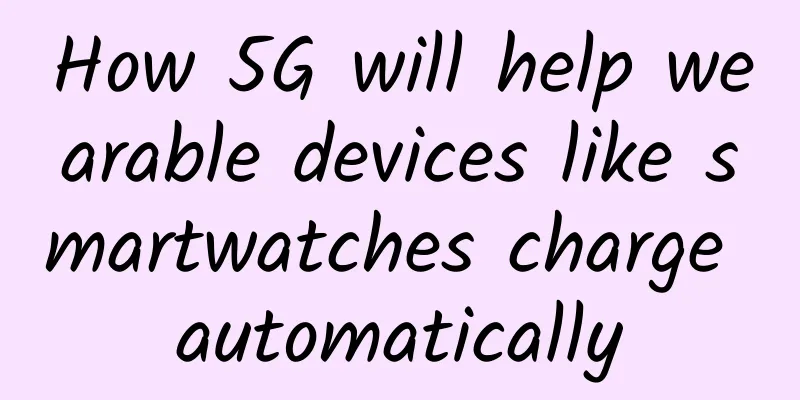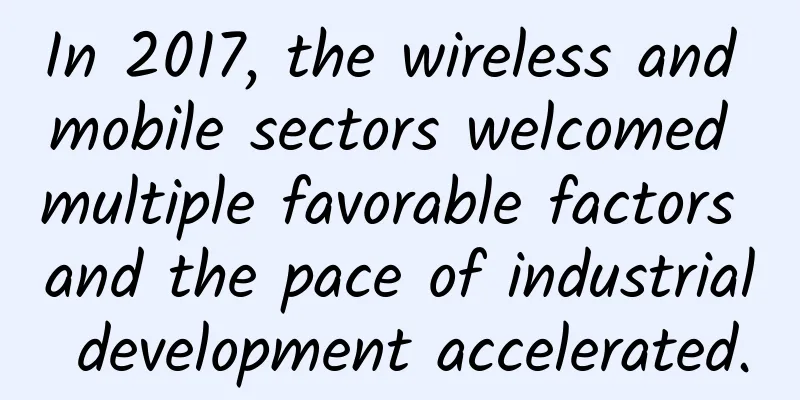5G is not yet popular, and 6G is coming?

|
In 2022, have you already switched to a 5G phone and used a 5G package? In fact, the development of global mobile communication technology follows the rule of "use one generation, build one generation, and research and develop one generation". In other words, when you are still hesitating whether to switch to 5G package, the next generation 6G is already on the way. What is "G"?We often talk about 4G, 5G, and 6G, so what does "G" stand for? "G" refers to "Generation". 1G to 6G correspond to the first to sixth generations of mobile communication technology, and each generation of communication technology upgrade has brought about a leap-forward improvement in speed and economic efficiency. In the 1G era, which is the "big brother" era familiar to the older generation, mobile phones could only make calls but could not access the Internet or even send text messages. In the 2G to 3G era, mobile phones could send text messages and access the Internet, gradually crossing from the era of feature phones to the era of smartphones. In the 4G era, mobile payments, short video live streaming apps, mobile online games, and mobile phones have become an indispensable part of our lives. In the current 5G era, communications have expanded from only connecting people to people to connections between people and things, and things to things. The "Internet of Everything" has become possible, and telemedicine, distance education, drones, driverless driving, and smart homes have become a reality. In the future 6G era, according to the description of 6G in the "6G Overall Vision and Potential Key Technology White Paper" released by the IMT-2030 (6G) Promotion Group, 6G will, based on 5G, further expand from serving people and people and things to supporting the efficient interconnection of intelligent bodies, and will achieve the leap from the Internet of Everything to the Intelligent Internet of Everything, becoming a link between the real physical world and the virtual digital world. The white paper also points out that immersive cloud XR, holographic communication, sensory interconnection, intelligent interaction, communication perception, inclusive intelligence, digital twins, and full-domain coverage will become the eight major business application scenarios of 6G. As for the arrival time of 6G, experts generally predict that 6G will be commercialized around 2030, and this year will be a critical period for 6G to transform from an academic research field to an industrial vision. According to data, under the guidance of the Ministry of Industry and Information Technology, my country has established a 6G technology R&D promotion working group and expert group in 2019; the "14th Five-Year Plan for Digital Economy Development" released in January this year also proposed to proactively lay out the sixth-generation mobile communication network technology reserves, increase support for 6G technology R&D, and actively participate in promoting the 6G national standard standardization work. 5G is not yet popular, but 6G is coming?6G undoubtedly brings more possibilities for future development. However, there are also views that 5G technology has not yet been truly popularized, and it may still be too early to talk about the implementation of 6G. By then, insufficient demand will become the biggest problem hindering the development of 6G technology. Although almost all mainstream mobile phone manufacturers' mainstream models have transitioned to 5G, according to the latest statistics released by the Ministry of Industry and Information Technology, as of the end of February 2022, the total number of mobile phone users reached 1.651 billion, while the number of 5G mobile phone users of China's three basic telecommunications companies was 384 million, accounting for only 23.3% of the total number of users. In the real context, for most mobile phone users, 4G is enough to meet the daily entertainment and work needs such as watching videos and live broadcasts. The advantages brought by 5G are in an "overflow" stage. Coupled with the cost of 5G packages, there is naturally no need to use 5G networks. In fact, according to a previous survey, lack of demand is the main reason for not buying 5G mobile phones. More than 70% of non-5G users believe that the public currently has no need to buy 5G mobile phones. Some industry insiders also said, "In addition to 5G chips and 5G antenna modules, the current 5G mobile phones do not see any new features. They are not ideal 5G mobile phones." Economist Shi Wei said in 2020 that the biggest breakthroughs of 5G technology are low latency, slicing technology and edge computing. The most important application scenarios of these three breakthrough technologies can only be reflected in modern intelligent industries. If they are simply used for civilian consumption and general public services, it may be a waste of 5G resources. However, from the current point of view, 5G technology has only been demonstrated in base station deployment and network speed. Its slicing technology and edge computing technology are currently developing slowly, which has great restrictions on the development of the Internet of Things, Metaverse, and Artificial Intelligence industries. Some analysts told Xiyou that in addition to mobile devices, it is difficult for them to list more scenarios in which they can use 5G, which is obviously inconsistent with the public's expectations. It is worth mentioning that in the video “How Fast? The Real Experience of 5G in Daily Use” which was once popular on the Internet, the author mentioned that “network speed may be the most boring application of 5G”, but from the current point of view, at least at the consumer application level, the biggest role of 5G is still its network speed. Conclusion5G is still looking for its "killer application". From the current perspective, the industrial Internet is the main field for 5G to play a role, such as in manufacturing, energy, medical care, culture and tourism, agriculture and other fields. As for 6G, the key is to identify the visions that are truly commercially valuable and accelerate the research and development of related key technologies so that they can be put into actual deployment during the 6G period. At this stage, the previously popular "Metaverse" may be one of the best partners for 6G. The development of things always shows a spiral upward trend. Its basic characteristics and features are progressiveness, tortuosity and cyclicality. Although 5G is still in the process of exploration and advancement in industry applications, the results achieved in the exploration process will surely bring valuable experience to the future establishment and popularization of 6G. Let us wait and see how 6G will develop in the future. |
<<: That's it? This is the SD-WAN you always mentioned to me?
>>: How hard do communication networks work to save power?
Recommend
Qeru: $3/month KVM-3GB/40GB/5TB/Dallas Data Center
According to information from LET, Qeru recently ...
Shanxi Enterprises Group, Xinkuang, Shanxi Mobile and Huawei jointly launched the 5G application pilot deployment
As an important large-scale coal enterprise in Ch...
Digital currency: Don’t be fooled by the “blockchain” cover
Since the beginning of this year, the digital cur...
Zhang Xianguo of DYXnet: Breaking through with AI-native hyper-connected architecture to safeguard the digital transformation of enterprises
In today's digital era, AI and large model ap...
IPv6 large-scale deployment is ready to go, and the Internet of Things may become a "killer application"
With the exhaustion of IPv4 address resources and...
LOCVPS newly launched Russian CN2 line VPS, with a 20% discount on all items and monthly payment starting from 29.6 yuan
LOCVPS has added a new data center product in Eur...
Join hands with Tianjin Feiteng Qiming Chen Group to create high-performance autonomous and controllable gateway products
[51CTO.com original article] On December 5, Venus...
VULTR: KVM in 17 data centers in Japan, South Korea, Singapore, etc. Monthly payment starts from 3.5 USD, supports hourly billing, and registration will give you 100 USD
VULTR is a foreign VPS merchant founded in 2014. ...
Geek Host: 20% off for all VPS monthly payment, 35% off for annual payment, top up 300 and get 50
Geek Host is a Chinese hosting company founded in...
Using tunneling protocol to achieve transparent communication between different dubbo clusters
[[375332]] Preface The author has recently comple...
10gbiz: Hong Kong CN2 GIA/Los Angeles CN2 GIA line VPS 60% off $2.75/month
10gbiz has released a current promotion, with 40%...
MoeCloud: US CN2 GIA line VPS annual payment starts from 299 yuan
MoeCloud also launched a promotion this month, of...
What is edge computing? Why is it called the gas station in the era of smart IoT?
With the rapid development of the Internet of Thi...
In the post-epidemic era, AIOps unleashes new vitality in enterprise operation and maintenance
[51CTO.com original article] 2020 is destined to ...
Three key considerations for upgrading your business to 5G
“While the discussion and hype around 5G has focu...









